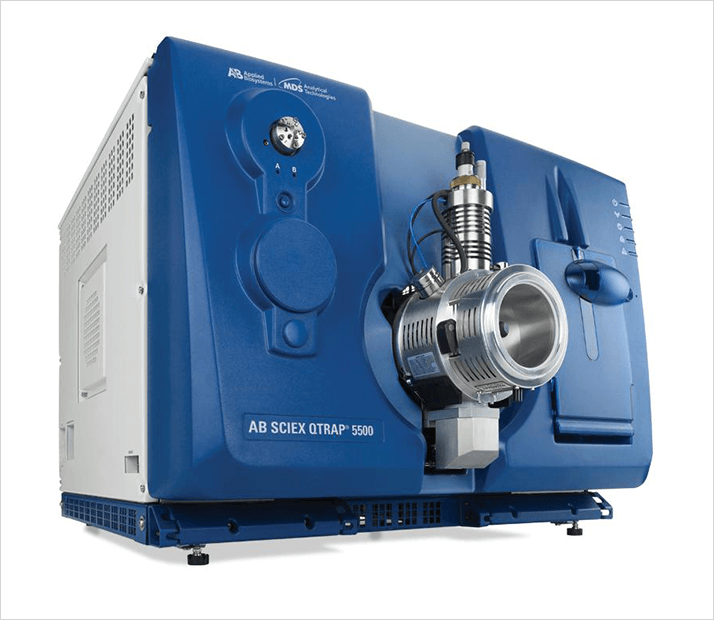Purpose
This application note describes a novel screening method for major metabolites of two main active ingredients of K2: JWH-018 and JWH-073. This method takes advantage of the QTRAP® system to perform an information dependent acquisition (IDA), using multiple reaction monitoring (MRM) as a survey scan, and automatically triggering enhanced product ion (EPI) scans, or linear ion trap full-scan MS/MS. EPI spectra are submitted for searching against an MS/MS spectral library for confirmation.

 Figure 1. QTRAP® System technology enables identification, characterization, confirmation and quantitation of low abundance analytes.
Figure 1. QTRAP® System technology enables identification, characterization, confirmation and quantitation of low abundance analytes.Introduction
JWH-018 and JWH-073 are two main active ingredients of K2. They act as cannabinoid agonist at both CB1 and CB2 receptors. JWH-018 is more selective to subtype CB2 and JWH-073 is more selective to subtype CB1. When smoked or orally ingested, K2 produces some effects that are similar to those of cannabis. Several countries and few states in the US have placed legal restrictions on these compounds. To establish a screening method in human urine for K2 is relatively challenging because of the multiple active ingredients present in K2 along with the relatively short half-life for the parent compounds. The most effective screening method should include the detection of active ingredients as well as their metabolites. To resolve these challenges, JWH-018 and JWH- 073 were individually incubated in human liver microsomes, and the in vitro phase I metabolite pathways were identified for each of these active ingredients. Based on these in vitro results, the metabolites of all active ingredients in phase I and the predicted corresponding phase II conjugates were combined to generate a predicted MRM list, that was applied to identify metabolites of JWH-018 and JWH-073 in positive human urine specimens. A screening method was developed on the QTRAP® hybrid triple quadrupole linear ion trap system to take advantage of an MS2 spectral library that was generated from both the in vitro human liver microsomes and the positive human urine samples.
Key Features of Hybrid Linear Ion Trap Technology
- Exceptional triple quadrupole and ion trap sensitivity allows identification, characterization, confirmation, and quantitation of low abundance analytes with a high degree of confidence.
- Powerful workflows enable fast, efficient identification, characterization, confirmation, and quantitation—all in a single experiment.
- LINAC® collision cell permits greatly reduced dwell times without a loss in sensitivity allowing multi-target analyses.
- Broad linear dynamic range provides true triple quadrupole quantitation performance and enhances identification of ions in complex matrices.
- Powerful advanced scan modes, including neutral loss and precursor ion scans, can be used in flexible combinations to achieve unprecedented selectivity.
Experimental Conditions
JWH-018 and JWH-073 were incubated in human liver microsomes individually for identification of corresponding phase I metabolites.





